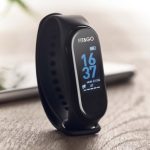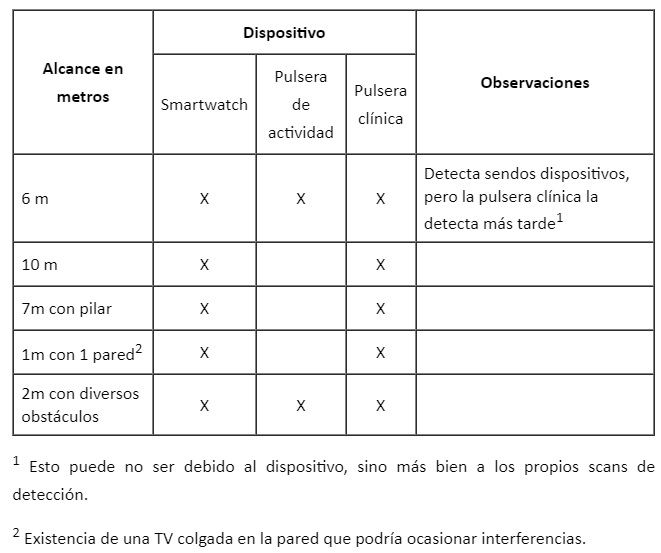Integrated Disability emerged as a proposal presented by Teresa Gallego, associate professor of the Department of Mechanical Engineering and Construction of the Universitat Jaume I of Castelló (UJI), and Raúl Marín, associate professor of the Department of Computer Science and Engineering of the same university. In the proposal, it was noted that one of the main problems faced by people with disabilities occurs when they have to interact in public places and at the same time maintain their privacy with respect to the disability and retain their anonymity.
This happens when they have to go to use certain public services, leisure venues and supermarkets or perform various everyday tasks in which the disability can make interaction difficult. Beyond architectural barriers, if the person providing a service has no previous knowledge of the disability, situations may arise that are embarrassing for the person with the disability.
Therefore, the main aim is to make public centres more easily accessible for people with disabilities. Public centres are defined as places where personal attention is required (cinemas, supermarkets, libraries, etc.) that provides them with a better “quality of life”.
The aim of the project is to use a data transmission system, based on Bluetooth technology and supported by a set of sensors and receptors, to provide the person with a disability with a private, anonymous interaction in any public service. The data are transferred to the counter of the corresponding public service as specific orders that enable assistance to be given to the person with disabilities in a proactive way, depending on their needs.
The UJI.>LAB Challenge Integrated Disability will be developed using the “Innovation Camp” methodology, based essentially on a combination of methodologies known as Design Thinking, Human Centred and Design Sprint. The characteristics of these methods are brought together to develop a process of innovation led by the interested parties in which participants explore, experiment, develop prototypes, discover and, above all, learn. Using these methodologies, the aim is to accelerate the design process, define the objectives, conceive/sketch potential solutions, decide which idea to carry out, create a prototype, and test it and validate it with real users (Design Sprint). All this is carried out with an innovative, person-centred approach, in which the problem to be solved is addressed in an integral way (Design Thinking) and bonds of empathy are sought with the people affected (Human Centred).
The project UJI.>LAB Challenge Integrated Disability is based on a dynamic of solving challenges in the university community and using the Innovation Camps methodology for co-creation processes. Staff from different areas work together on this project: Architecture, Computer Engineering, Economics and Health Sciences. In addition, the project is developed in collaboration with the Castelló Parkinson’s Disease Association.
The participants in the project are:
In addition, the company Gen72 is collaborating in the project by developing the app “MiVidaMásFácil” (MyLifeMadeEasier).
Stage 1: Launch and creation of a business plan
During this stage, students in the area of economics developed a business strategy model using a CANVAS through which they could commercially exploit the app, for example, by founding a start‑up.
Also during this stage, a comparison was made of current digital technologies to identify a technology that favours communication between parties. The technology selected needed a database and a user-friendly questionnaire to gather information from the various stakeholders, which would help us to understand the relationship between the illness, symptoms and needs. For this purpose, the Castelló Parkinson’s Disease Association was contacted, since it is a real organisation with users who have this problem.
Stage 2: Creation and validation of the questionnaire on orders and needs
During this period, a questionnaire was developed with the orders needed to attend to the users depending on their specific needs. The questionnaire included icons to be able to give the required order in a visual way. The questionnaire was created by the Health Sciences area consisting of doctors, nurses and psychologists from the Universitat Jaume I. It was then validated by people with Parkinson’s disease who belong to the Castelló Parkinson’s Disease Association, always under the supervision of two people from the association. In addition, due to the health situation derived from Covid-19, and with the aim of assessing the potential barriers perceived by the users in a real space, a Matterport was created of the Infocampus (the location selected to validate the result). Through this, users could visualise the space in 3D and move around it to check the potential needs they could have depending on the spatial distribution, without the need to be physically present in the chosen location. In this way, the users could evaluate the questionnaire more effectively.






Stage 3: Development of a functional prototype
In this stage, several students designed and developed a basic prototype of the application “MiVidaMásFácil” (“MyLifeMadeEasier) under the supervision of professor Dr Raúl Marín. This app, which could be installed on a smartwatch or smartphone, retransmits via Bluetooth the orders required to attend to the person with disabilities depending on their specific needs. However, with the aim of obtaining a functional prototype, they collaborated with the company Gen 72 to obtain a functioning app and validate the technology in a relevant setting, in this case, Infocampus.
The system consists of an emitting device and a receiver, in this case a tablet on which the app “MiVidaMásFácil” (“MyLifeMadeEasier”) is installed. The communication between emitter and receiver is carried out via Bluetooth. Consequently, a smartwatch or similar is established as the emitting device, due to its convenience and to avoid connection problems, as it is always worn on the wrist.
To see the orders associated with the user, the person providing the service only needs to click on the user that they will attend to. The orders and the user’s handle will previously have been registered in the system.
Test of concept in Infocampus
With the aim of validating the initial prototype of the app developed by the company Gen72, a test of concept (TOC) was undertaken in which real users with disabilities (three users from the Castelló Parkinson’s Disease Association) tested, assessed and checked the app in an initial stage.
The TOC consisted of a simulation of the potential user–app interaction in a relevant setting, by carrying out a procedure on the Infocampus of the UJI.
Specifically, the following tests were undertaken to assess three types of emitting device (a smartwatch, a medical alert bracelet and an activity bracelet):
Single TOC: a simple test in which the three users from the Castelló Parkinson’s Disease Association independently accessed the Infocampus to check that their entry was detected via the device (each user wore a different device) and that the corresponding orders were sent to the tablet.
Initial simultaneous test: entry of several users at the same time. To assess the functionality of turning on/off the medical alert bracelet, and the most suitable procedure when several users enter at the same time.
Signal range of the device: check the range in which users can be detected in the space and the potential errors at 6 and 10 m, at 7 m with an obstacle (with the device situated behind a pillar), at 1 m in a straight line with a completely solid obstacle (a wall), and at 2 m on a diagonal with several obstacles (walls and a closed door).
Conclusions obtained from the TOC
Single TOC:
In general, the test was successful. The three devices were detected on entry and the orders associated with each user were received on the tablet. The suitability of the orders according to needs was validated by users with Parkinson’s disease and by service staff. It was noted that the orders were simple and easy to interpret, and facilitated the attention received while retaining the user’s anonymity. In this regard, with respect to the difficulty-need/order “Improve communication” and “Listen with attention”, it was highlighted that users with disabilities should not be undervalued. In other words, they should be spoken to clearly, but care must be taken with the language that is used: they are people with disabilities, not children.
Most suitable emitting device:
The users considered that the most suitable device was the activity bracelet, due to its affordable cost, its added functionalities (time, counting steps, etc.), its discretion and comfort (it is light). Another advantage of the activity bracelet is the longer battery duration. In contrast, the clinical alert bracelet is rather conspicuous, which contradicts the fundamental aim of the project of remaining anonymous. It was considered very likely that many people would ask about its function and thus reveal the disease. In addition, it was noted that a clinical alert bracelet has no other functions than those of the project (for example, the time, counting steps, etc.), so there was a high risk of forgetting to put it on.

Initial simultaneous test:
After carrying out the test, it was found that users needed to be identified via a handle. This handle must be defined when the user with disabilities registers in the system. This requirement should be specified in the training of the staff who enter users in the system and in that of the users with disabilities.
In addition, a handle will avoid problems in the implementation of the app that is developed. Users can follow the procedure established by the entity where they want to use a service, get in line using the established method and identify themselves with their handle when they get to the counter/window. This avoids the integration of the app in the software system used in each public administration or organisation and/or any confusion that could arise in the repetition of numerical codes.
Signal range of the devices:
The alert detecting the entry of the user should only go off when they are quite close. In other words, the device should have a short signal range, so that the user is only detected when they are going to be attended. The potential associated problem is that the service staff do not have enough time to see/read the orders. However, this risk factor will be eliminated with the service staff training plan, which will explain the meaning of each icon. In this respect, the activity bracelet is the device that had the smallest range and was also the device with the highest user rating.

Design of a training plan for users and service staff and implementation of improvements in the app
Training is needed for users, including users from the Parkinson’s Disease Association and the service staff from Infocampus who will attend to them based on the orders received on the tablet. Consequently, work is currently being done to develop a training action plan aimed at all the stakeholders.
In addition, improvements and new functionalities are being added to the app.